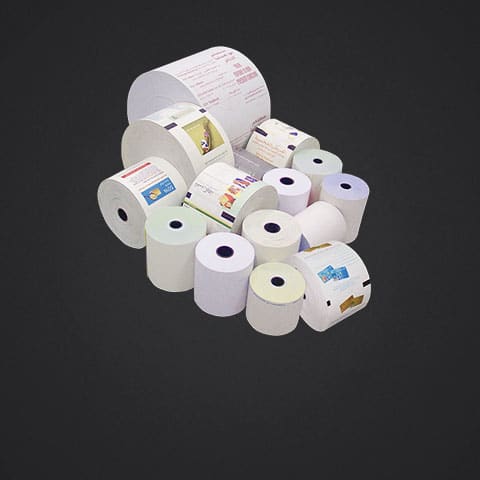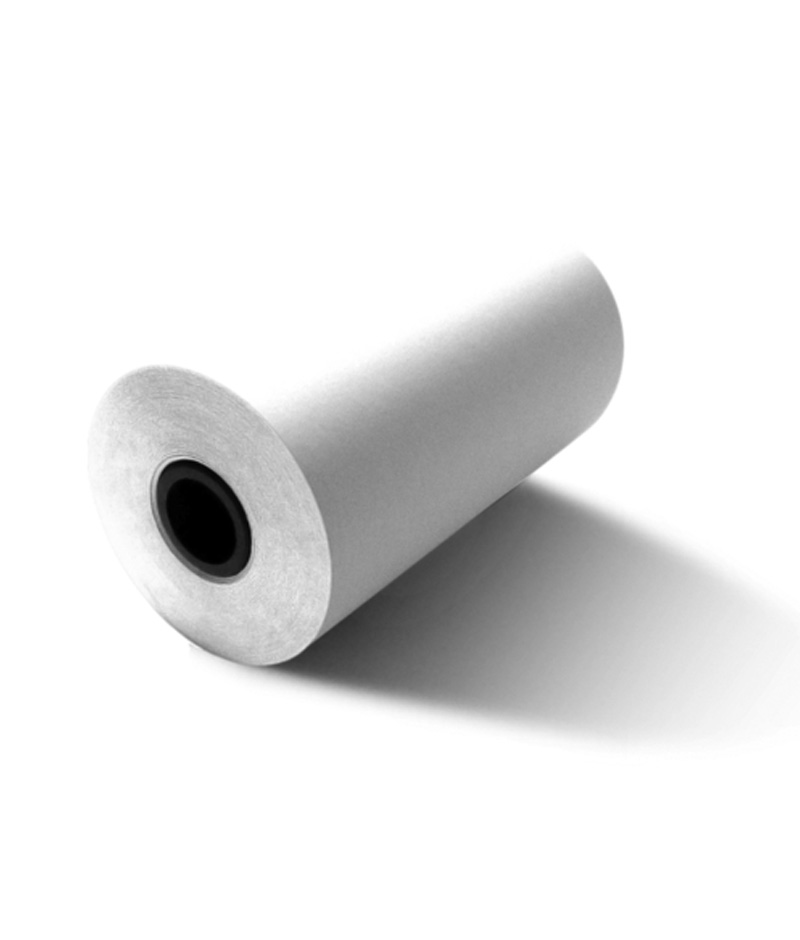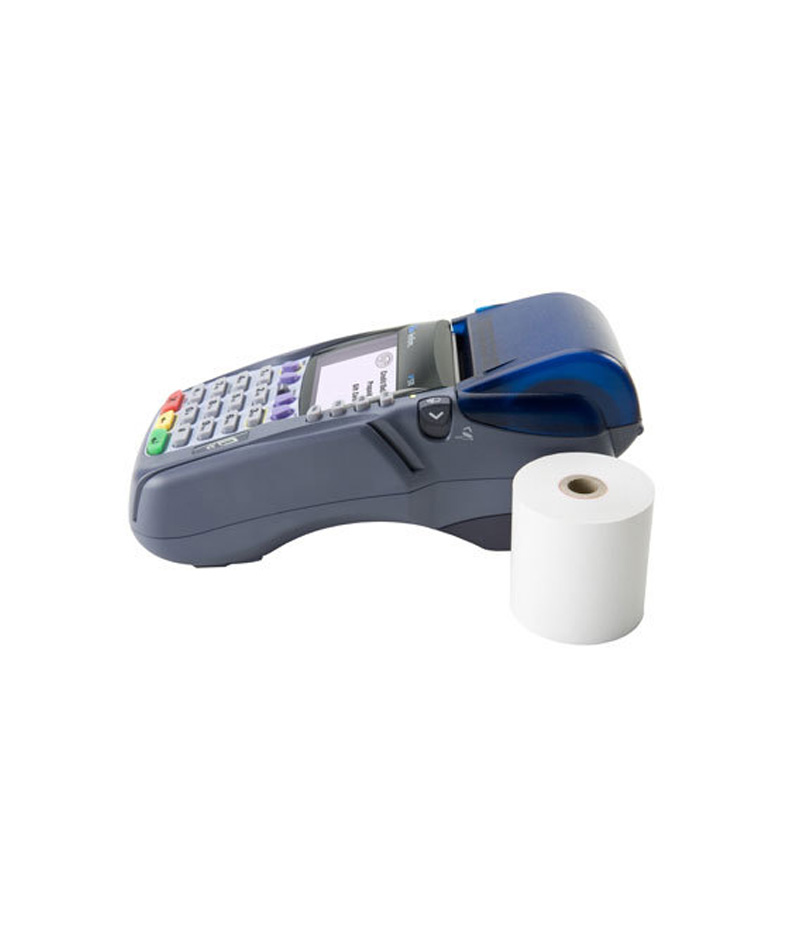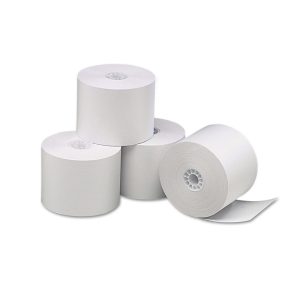The thermal paper, also known as an audit roll, is a specially designed paper that changes color upon exposure to heat without any use of ink. They are made from heat-sensitive materials and mostly used in devices like adding machines, credit card terminals, and cash registers.
The thermal paper has a coating of a solid-state mixture of dye with a matrix.
When heated above its melting point, the dye reacts with the acid-forming color. Bisphenol A (BPA) is the reactant acid in thermal papers. Coatings that turn black are used most of the time, but blue and red turning coatings are also used rarely.
With Fuji Thermo-Autochrome, the thermal paper first became available in 1993. In 2007, Polaroid developed the Zink(zero-ink) system.
HISTORY
NCR Corporation and 3M developed first thermal papers. Due to its cost-effectiveness, NCR technology became the global leader in the thermal paper industry even though its image fades rapidly, whereas 3M technology is much more durable but a bit expensive.
In 1965, Texas Instruments invented the first print head. The first thermal print system that printed on thermal paper was Silent 700.
In the late 1980s and 1990s, thermal paper-faced competitions from various technologies like laser printing, electrophotography, and also from inkjet printers due to its durability. But with the introduction of point of sale receipts(POS), direct thermal came back actively, making their mark in POS receipts like gasoline pumps, rental cars, and cash registers, etc.
THERMAL PAPER
Even though the thermal paper contains three layers, you won’t see it by just having a simple look. The first layer, which is just the paper, is called a substrate layer. The base layer that allows the heat to move through the paper consists of gelatin, alkali salts, and starches. The final layer is called an active layer that contains the chemicals making the paper react to heat. Few thermal papers contain an additional protective layer that helps the fading of paper.
IDENTIFICATION OF THERMAL PAPER
The thermal paper feels quite different from standard paper. They have a very slick surface and are very hard to write on with a pen or pencil. Regular paper rolls are like typical copy paper that you can write on effortlessly. The easiest way to identify a thermal paper is by swiping a fingernail because if it is a thermal paper, it will change color due to the heat generation.
USE OF THERMAL PAPER IN A NORMAL PRINTER AND VICE VERSA
It is not at all advisable to print a thermal paper in a regular printer because they use ink to write, unlike thermal printers that use heat to print on thermal papers. Using a thermal paper in a regular printer will give awful results. The same happens with using regular paper in a thermal printer.
MEASURING THERMAL PAPER ROLL SIZE
Thinking of starting your own paper roll business, then the first step should be to know the exact paper roll size. The best way to find out is to ask your paper supplier what you exactly need and what products are compatible like regular paper, ribbons, cleaning supplies, etc. You can also google the exact roll size depending on your needs, and you can even measure it by yourself.
CHOOSE THE BEST PAPER ROLL SIZE
There is no shortage of available thermal papers; there are a whole lot of sizes available based on the customer’s need. Whether you are a startup or an established business, the right paper size will help you save money as well as your time.
HOW MUCH PAPER ROLL YOU NEED
The amount of paper roll required is dependent on the number of business transactions you have. If you know the exact amount of paper required, you may get reasonable discount offers on bulk orders.
COST-EFFECTIVENESS OF THE PAPER ROLLS
First, make a total expense budget of rolls then compare prices from multiple manufacturers. This way, you get the best possible deal and your money’s worth.
THERMAL PAPER TOXIC OR NOT? PREVENTION
Bisphenol A is the essential component of the thermal paper, and it is an organic synthetic compound. It is found in almost all the plastic food and beverage containers like cans, stretch wraps, and plastic bottles. It is the primary reactant acid, which is a part of the coating of thermal paper. In the retail sector, it is traditionally used for weighing scale and receipts.
BPA has hormone-like functions and works as an endocrine disruptor and has been a cause of concern. It is a highly suspected element regarding health issues like diabetes, cancer, obesity, and developmental disorders. Use BPA free thermal paper and prevent these health issues for you and your customer both. BPA free thermal paper is already available in the marketplace.
Thermal paper is a special kind of paper that changes in color when exposed to heat without using ink. Thermal paper is commonly used in POS systems, cash registers, and credit card booths.
The thermal paper roll is primarily used by retail, catering, and hospitality sectors, though there is also a growing demand for the same in FinTech and government sectors.
How Does it Work?
Traditional papers require a toner or ribbon for printing, but thermal papers rely on a chemical reaction when subjected to heat.
Thermal paper rolls consist of a chemical coating on their surface, which gets activated when the paper is subjected to heat inside a thermal printer. Subsequently, this heat energy causes the coating to form images. This is why thermal papers are much more manageable than traditional paper for printing purposes. It’s also a much quicker and more reliable option that can be used for high-definition images.
You can browse a variety of options and buy thermal paper Canada below. As the leading distributor of thermal paper in Canada, we have an array of different sizes and quality thermal paper rolls.

Benefits of Thermal Paper over Traditional Paper
High-Quality Images
Retail businesses print thousands of receipts and labels every single day for their customers. As such, you’d want the paper and print quality to be sturdy and readable. The best thing about thermal paper is that it doesn’t use ink but utilizes the heat energy to cause a chemical reaction in itself, resulting in a high-definition image. You don’t need to worry about the smudges on the final print affecting readability.
Increases Efficiency
Thermal printers produce prints much faster than traditional paper prints. The image produced in thermal papers takes milliseconds and dries almost instantly. This increases the number of prints in a given time frame, thereby increasing efficiency and saving valuable time for your customers.
Lesser Maintenance Cost
Lastly, thermal printers require very low maintenance due to the absence of ink and cartridges. Thermal printers are also more durable as they don’t have as many moving parts as traditional printers do.
Lesser Printing Cost
Thermal papers also cost you less per print as compared to traditional paper. As there’s no need to incur expenses on cartridges and ink, you can save high costs by relying on thermal papers to serve customers.
FREQUENTLY ASKED QUESTIONS
1.Do thermal papers use ink for printing?
No. Unlike traditional printing, thermal papers don’t require ink for printing. The paper undergoes a chemical reaction when exposed to heat, causing high-definition images in the final print.
2. What is the difference between a thermal paper and standard paper?
Thermal papers differ from traditional paper. Thermal papers are difficult to write on using pen or pencil. The best way to identify thermal paper is by rubbing your fingernails on the paper, which should cause a change in color due to the generation of heat.
3. Do thermal paper require ribbons for printing?
No, thermal Printing doesn’t require any ink, cartridge, or ribbon for printing.
4. Is thermal printing better than traditional printing?
Yes. Overall, thermal Printing has lesser cost per print, lesser maintenance requirements, and more efficiency with the capability of producing high-quality images.
5. What chemical do Thermal papers have?
Thermal papers mainly contain Bisphenol A, an organic synthetic compound which is the primary reactant in the paper.



